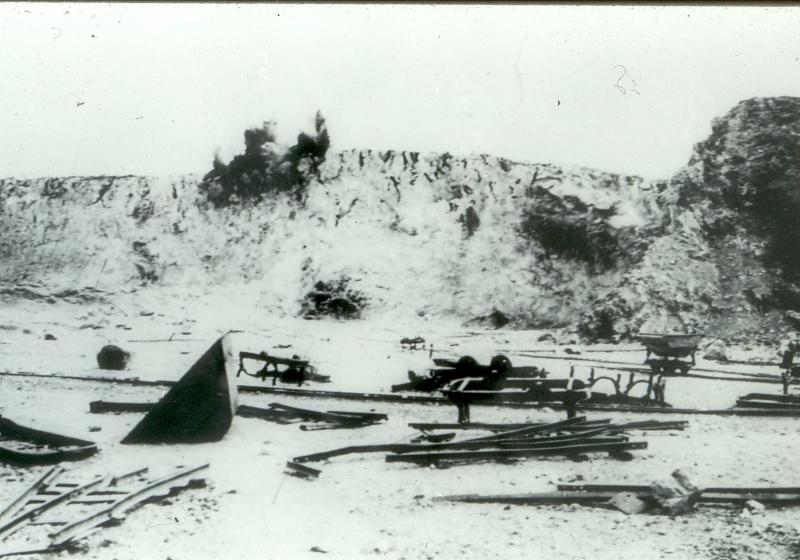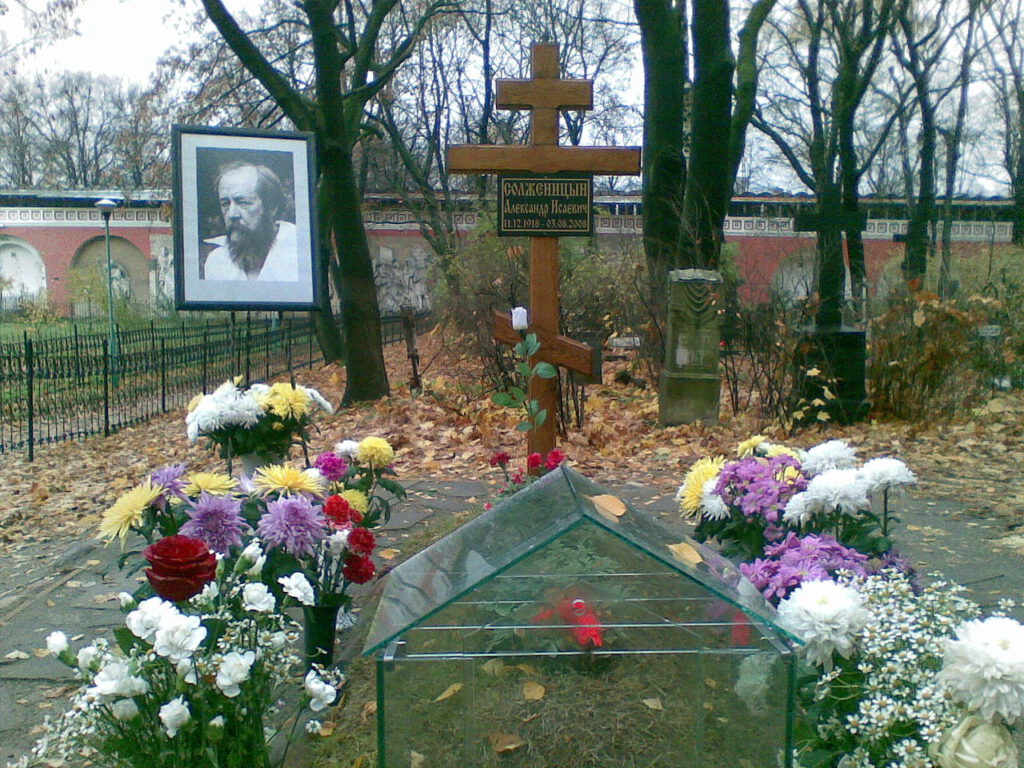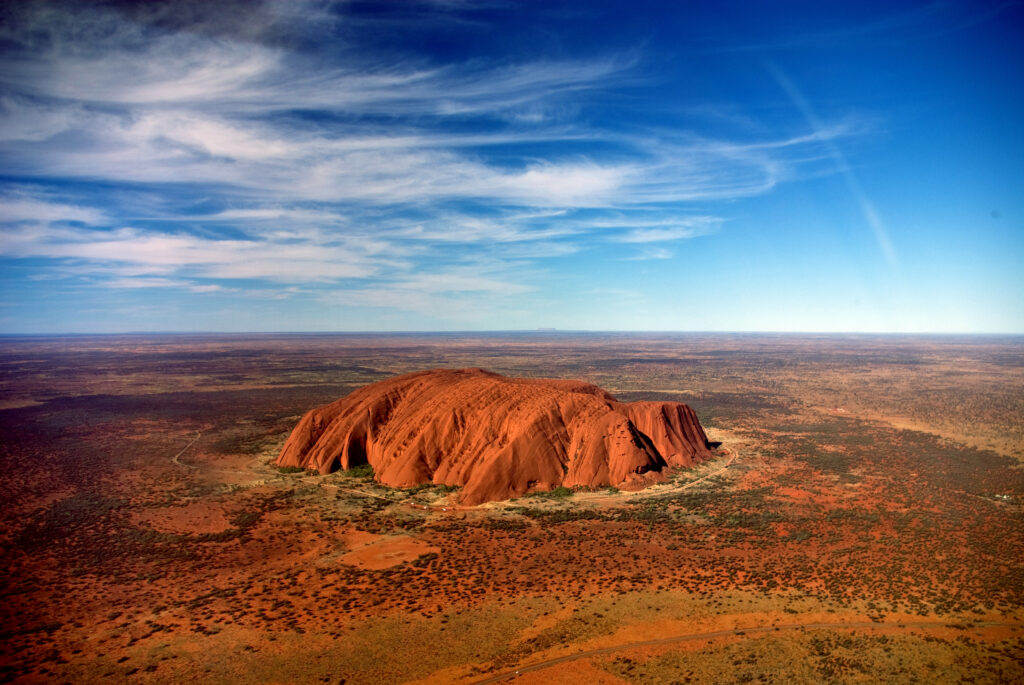On the southern fringes of the Kalahari across the interior of southern Africa stretch ranches and dryland farming in all directions. Here and there outcrops and hills break the monotony of the plain often overlooking seasonal streams and rivers. Near such a ridge, in 1924 the unlikely settlement of Taung (‘lion’s den’) was the epicenter of an event that was to shake the sedate world of anthropology to its very core.
In the early ’90s when our family rolled into that sleepy town there was only a sun-bleached sign pointing down a gravel road toward a nearby limestone cliff. It read, ‘Taung Child Cave’. We followed the road west, crossing a stream and then climbing through thorn scrub into the hills. The track brought us to a commanding lookout atop the cliff. In harsh glare and heat we gazed out east beyond the town, over a mighty swatch of shimmering flatland that instilled something like – well, reverence. Beside us was a small opening in the cliff that could hardly be described as a cave. More an alcove. Strewn around, the detritus of careless picnickers.
But nothing – not the ranches or farms, the sleepy town or the litter – could cancel the powerful air that possessed this humble corner of the human story. It is the site of the discovery in 1924 of the Taung Child, the first hint that earliest human origins lay not in Asia or Europe, but in Africa. This unsettling assertion turned on its head the conventions not only of paleontology and religion, but eventually of white supremacy and colonialism. At a time when lynchings ran amok in the American South and the headlines of the day fastened on the ‘Scopes Monkey Trial’, the fossil remains of a three-year-old child came to light in this African cliff face.
The story says that mine workers in the Buxton Limeworks occasionally found primate fossils in small openings exposed by blasting. A fossil skull struck the fancy of mine personnel in town where it sat on a fireplace mantle as a conversation piece, its eyes staring out blankly on a strange world. One day a university student of anatomy passed through town asking if she might take the skull to her professor, Raymond Dart, a world-renowned scientist. In a matter of weeks he published an article in Nature magazine asserting that this fossil was a 2.3 million year-old ancestress of humankind: Australopithecus africanus.

What ensued in 1925 and for decades after can only be described as the aftershocks of an earth-shaking event eliciting near universal rejection and scorn. But soon the larger family of the Taung Child came to light elsewhere, notably in East Africa through the work of the Leakeys at Olduvai Gorge. Today the place of the Taung Child in humankind’s family tree is secure. Her fossil remains are part of the collection at the ‘Cradle of Mankind’ outside of Johannesburg. Meanwhile, a visitor center has been erected in Taung to claim and honor this distinguished predecessor of a sleepy flatland town.
As we drove away from the cliff face that day, I stopped to chat with a shopkeeper, explaining that I had just come from the cave site. He stared at me in astonishment saying that I was lucky to have escaped unscathed. ‘That place is the haunt of ‘tsotsis’ (small time outlaws). Had they found you there, they would have stripped you of everything and left you in the ditch,’ he assured me.
Apparently, no one had told them the knee-buckling story of a child who ages-ago preceded them – and us – to the cliff site, who restored Africa to the first rank of honor in the saga of human origins.



Hmmm, was it in Ardrey’s “African Genesis”, that you passed along to me in the Congo, where I first encountered the name of Raymond Dart?
Yes, Mike, and in Desmond Morris’ “Naked Ape”, I’m sure. To think we looked out across the Rift Valley for those years with only an inkling of what dramas were still buried there. Dart is remarkable not just for his acumen as anatomist, but for his courage in holding out in the face of withering naysayers for decades. Do they give prizes for sheer courage of conviction?
A technical question lurks in the report of Professor Dart’s dating of the fossil: what method produced the value of 2.3 million years? I know something of the history of mass spectrometry, a possible technique. I asked a retired geology prof about it, specifically whether the technique was sufficiently developed by the late 1920s to answer Dart’s question. His answer was vague, and I remain puzzled, but not enough so to go to the campus and plunge into the geology library archives. Jonathan, if you have access to details of Dart’s work, please speak up.